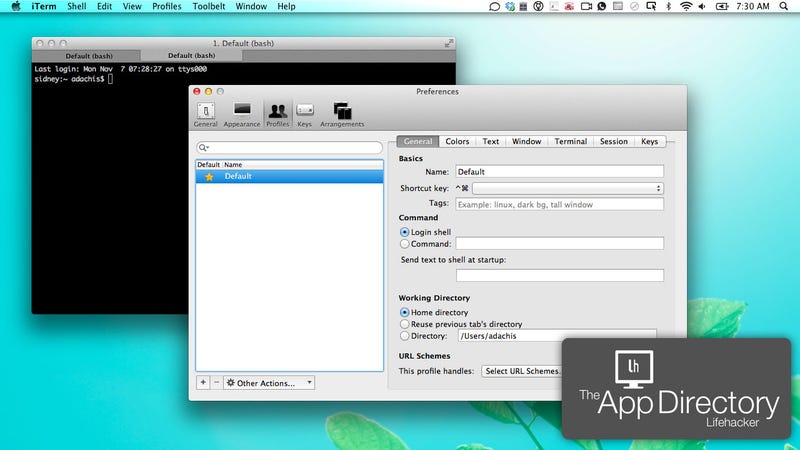
I Need Secure Terminal Emulation for my Mac Systems SecureCRT ® for Mac is built to meet the needs of the most demanding network professionals. SecureCRT for Mac offers a major step up from the macOS Terminal, with the ability to save and customize terminal sessions, serial protocol support, access to the macOS local shell, and a high-productivity user interface with plenty of ways to automate tasks. You can have all this with little or no retraining for staff who already are familiar with SecureCRT on Windows. SecureCRT for Mac provides Telnet, Secure Shell (SSH1 and SSH2), SFTP, and serial support. This support for open standard protocols means SecureCRT can connect to Mac, Linux, UNIX, Windows, and other systems, as well as manage a wide variety of network devices from the latest Cisco router to the dumbest switch. SecureCRT provides support for Secure Shell data tunneling and offers secure file transfers using SFTP, Xmodem, Zmodem, and Ymodem.

Use the same on Mac, Linux, and Windows. Get a commercially supported UNIX. Nonsecure Telnet.
Nonsecure FTP. Securely with simple drag and drop. From the road to check email. Machines over the internet. Allow users to with limited access. Lock down my. Or script secure file transfers.
Mar 21, 2018 - 9 Alternatives for the Apple's Mac Terminal App. ITerm2 lets you slice up a single window into multiple panes, each with its own independent session. Hyper is a terminal app that also supports JavaScript, HTML, and CSS. Upterm calls itself “A terminal emulator for the 21st century.” Terminator. Jump to macOS - Terminal - default macOS terminal; iTerm2 - open-source terminal specifically for macOS; xterm - default terminal when X11.app starts.
Use strong data. Using a variety of terminal emulations. File systems with remote servers. Routine tasks.
Best Terminal Emulators For Mac Windows 10
Set up a and allow users to transfer files with limited access.
DID YOU KNOW? Did you know that Macintosh computers are the first computers to be sold with the mouse? When Apple, it came complete with a graphical user interface, a built-in screen, and a mouse. The invention of the computer mouse, the external handheld pointing device, is credited to Stanford Research Institute and Augmentation Research Center scientist Douglas Engelbart, who wanted to improve the pen-like stylus and create a better device that can help computer users in pointing and clicking on the interface. Basing on the trackball with a stationary box built by a Royal Canadian Navy Digital Automated Tracking and Resolving system engineer named Kenyon Taylor, Englebart and his team created a small moveable box with a trackball that relays the user's motion to the graphical user interface. Engelbart and his team called it a mouse because it was a box with a cord that connects it to a computer. In 1965, the invention was released and was praised for its simplicity, and soon many innovators created similar devices.
Best Terminal Emulators For Mac
It took almost 20 years before the mouse was embraced by computer companies, but the success of the first made the mouse almost necessary for them. In modern times, computer mice have evolved, as most mice now use laser light for tracking instead of the old trackball. Some mice are wireless, come with a backlight, and some.
